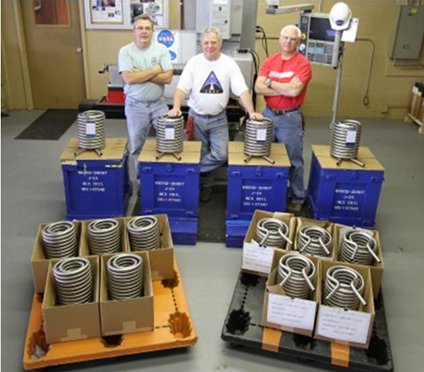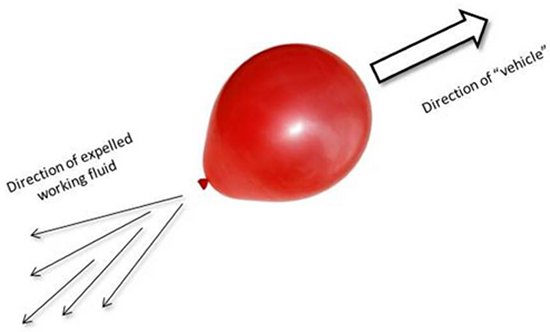Cain Tubular Products of St. Charles, Illinois has completed fabrication of the full set of heat exchanger (HEX) coils for the J-2X development engines. These coils have been delivered to Pratt & Whitney Rocketdyne for the next step in the fabrication process that involves integration into the hot gas ducts being assembled by Arrowhead Products in Los Alamitos, California. The very first three units are already there and in work.
Below is a photo of the Cain brothers at their facility with their handiwork on display.

The HEX is a component of the engine that contributes only indirectly to engine operation. Specifically, it is used by the rocket stage to develop pressurant gases for the liquid oxygen tank.
During flight, as the engine pulls liquid oxygen from its storage tank on the stage, and as the tank drains, you need something stuffed back into the tank to replace the liquid or it will potentially collapse. Also, due to the physics of cryogenic liquids, the pumps on the engine require a certain amount of pressure at the engine inlet in order to function effectively. From the perspective of getting payload to orbit, the most efficient stuff to put into the tank to fill the volume vacated by the liquid is warm gas. But where are you going to get warm gas while the vehicle is hurtling through space? Trying to carry it in high-pressure tanks might work, but such tanks get very heavy very fast as the vehicle design gets larger. So, the better answer is this: You make warm gas while you’re flying.
Within the engine, the HEX is placed in the discharge of the engine turbines where very hot gas is allowed to flow around the coils during operation. Dense cryogenic helium is fed into the HEX inlet, it flows within the coil tubing, that tubing is surrounded on the outside by the hot gases which makes the tubing very wary, and then, at the HEX outlet, we get very warm, much-less-dense helium. That warm helium is then fed back to the stage to pressurize the liquid oxygen tank.
While there is certainly nothing patently new or exciting about heat exchangers in general — the radiator on your automobile, for example, is a heat exchanger serving a different purpose — it should be noted that due to the extreme conditions experienced within a rocket engine, and the stringent requirements placed on this particular piece of hardware, fabrication of the J-2X engine HEXs constituted its own small development effort. Cain Tubular Products did an exemplary job in deriving a unique fabrication process for this critical part and in delivering these parts in time to support the development test program.


 Hello! Welcome to the J-2X Blog.
Hello! Welcome to the J-2X Blog.